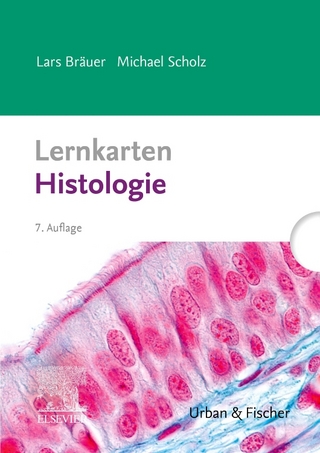
Encyclopedia of Cell Biology
Academic Press Inc
978-0-12-821618-7 (ISBN)
The new version includes a standard template for each chapter, making the content easier to navigate, as well as inserts and graphics which provide summaries of key points in each chapter.
Ralph A. Bradshaw is Professor Emeritus in the Department of Physiology and Biophysics at the University of California, Irvine. Prior to that he was on the faculty of the Department of Biological Chemistry, Washington University, and Professor and Chair of the Department of Biological Chemistry, University of California Irvine. He presently is Professor of Pharmacology at the University of California, San Diego. He served as president of FASEB, was the founding president of the Protein Society and was the treasurer of the ASBMB. He was the founding editor of Molecular and Cellular Proteomics. His research has focused on protein chemistry and proteomics, with emphasis on the structure and function of growth factors and their receptors, particularly nerve growth factor and ?broblast growth factor, and the involvement of receptor tyrosine kinases in cell signaling. He has also studied the role of proteolytic processing and N-terminal modi?cation in protein stability and turnover. Philip D. Stahl is Professor Emeritus at Washington University School of Medicine in St. Louis. He was educated at West Virginia University and Vanderbilt University. He served as Head of the Department of Cell Biology and Physiology and Director of the Division of Biology and Biomedical Sciences at Washington University. He has been the recipient of many awards including a MERIT award from the NIH and the WICB Senior Recognition award given by the American Society for Cell Biology in recognition of his work supporting the advancement of women in science. Among Stahl Lab contributions are the discovery of the lysosomal enzyme clearance pathway now implemented in the treatment of lysosomal storage disease, discovery of the innate immune receptor, the mannose receptor, discovery of the exosome secretion pathway, and the role of Rab5 and Arf6 in endocytosis. Currently his research focuses on endocytosis, signal transduction, and exosome biogenesis and secretion. Gerald W. Hart recently took a position as Georgia Research Alliance William Henry Terry, Sr. Eminent Scholar in Drug Discovery, and Professor of Biochemistry and Molecular Biology, University of Georgia. Prior to that he was at Johns Hopkins Medical School. Hart is the President of ASBMB and the recipient of a number of awards. He is Associate Editor of J. Biological Chemistry and of Molecular and Cellular Proteomics. He founded the journal Glycobiology. He performed early studies on cell surface heparan sulfates and on the roles of proteoglycans and sulfotransferases in corneal transparency. Hart’s laboratory discovered O-GlcNAcylation, co-led elucidation of GPI anchor biosynthesis with Paul Englund’s group, and documented the importance of protein structure for N-glycosylation. Hart later discovered the extensive crosstalk between O-GlcNAc and phosphorylation underlying the etiology of diabetes, neurodegenerative disease, cardiovascular disease and cancer.
Volume 1: Molecular Aspects of Cell Biology Molecular Components of Cells Nucleic Acid Synthesis and Degradation Protein Synthesis and Degradation
Volume 2. Organizational Aspects of Cell Biology Imaging Techniques in Cell Biology Organelles Intraorganellar Communication Cytoskeleton and Motors Intracellular Infectology
Volume 3: Functional Aspects of Cell Biology Cell Communication Glycobiology Cell Division/Death Cellular Immunology
Volume 4. Systems, Translational and Specialized Cell Aspects of Cell Biology Specialized Cells Systems Biology Pathological and Disease Applications
| Erscheint lt. Verlag | 2.12.2022 |
|---|---|
| Mitarbeit |
Chef-Herausgeber: Ralph A. Bradshaw, Philip D. Stahl, Gerald W. Hart |
| Zusatzinfo | Approx. 1800 illustrations (1800 in full color); Illustrations, unspecified |
| Verlagsort | San Diego |
| Sprache | englisch |
| Maße | 216 x 276 mm |
| Gewicht | 450 g |
| Themenwelt | Studium ► 1. Studienabschnitt (Vorklinik) ► Histologie / Embryologie |
| Studium ► 1. Studienabschnitt (Vorklinik) ► Physiologie | |
| Naturwissenschaften ► Biologie ► Zellbiologie | |
| ISBN-10 | 0-12-821618-2 / 0128216182 |
| ISBN-13 | 978-0-12-821618-7 / 9780128216187 |
| Zustand | Neuware |
| Haben Sie eine Frage zum Produkt? |
aus dem Bereich
